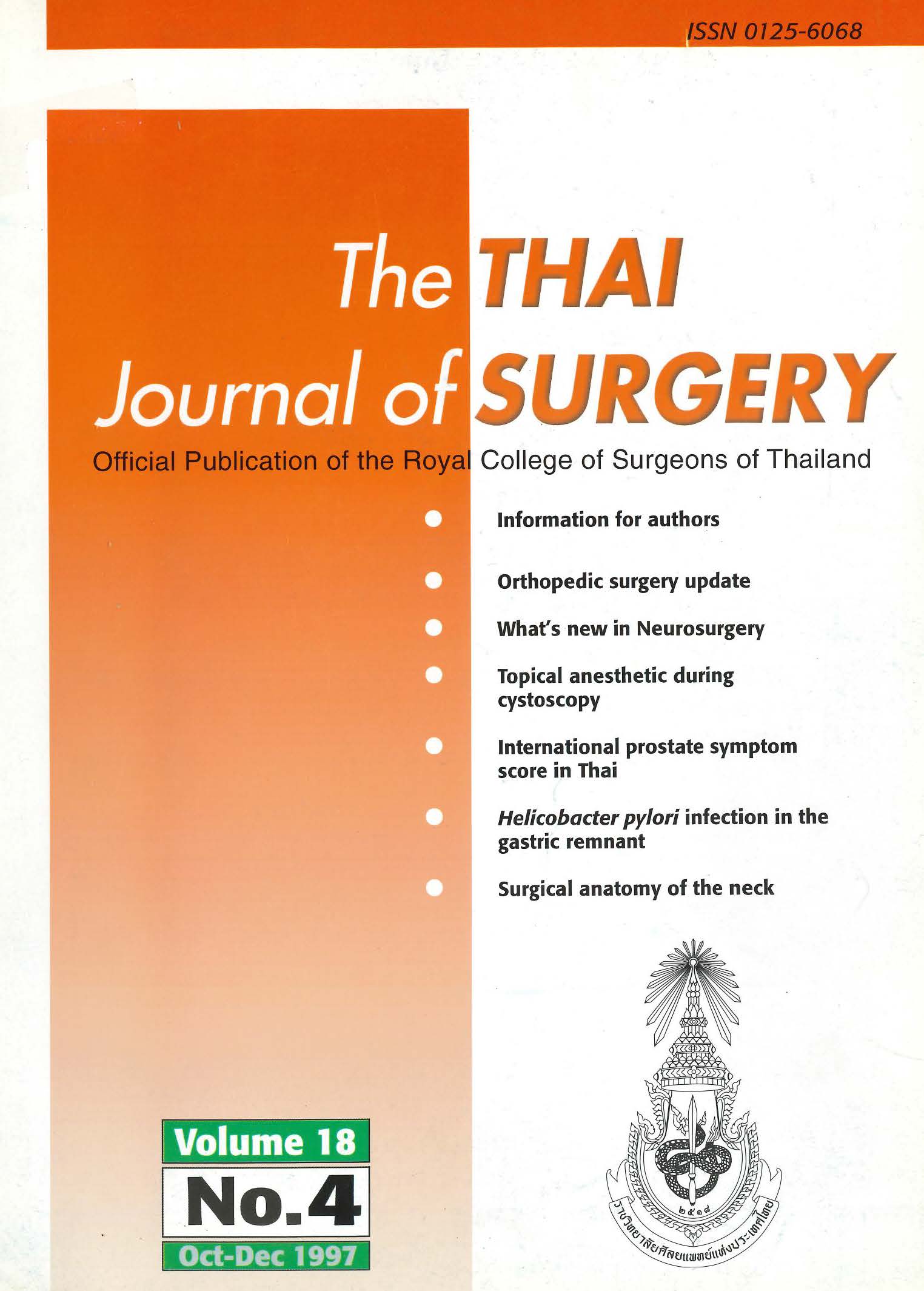Physician-assisted versus Patient-administered International Prostate Symptom Score (IPSS) in Thai Language
Keywords:
International prostate symptom score, Benign prostatic hyperplasiaAbstract
The International Prostate Symptom Score (IPSS) is the most commonly used patient-administered scoring system for the quantification of benign prostatic hyperplasia symptoms. The IPSS questionnaire has been translated into the Thai language. The objective of this study was to compare two methods of using the IPSS ; namely self-administration by the patient, and by the physician interviewing the patient. Eighty two patients completed IPSS questionnaires by themselves first, then they were interviewed by the physician. Total symptom scores (questions 1-7) and symptom severity grading were compared between the two modes of administration. Multivariate analysis of variance was performed to assess the effect of age, occupation, level of education and self-assessment to complete the IPSS. Mean total symptom scores and grading assessments by the physician versus patient-administered questionnaires were similar (16.16 versus 16.40 and 2.15 versus 2.12). But there was a statistically significant difference in the mean question scores of question 5 and question 7 (p=0.004 and p=0.032). Age, occupation and level of education did not show statistical difference significance by multivariate analysis.
There was no difference in total symptom score and symptom severity grading but the mean question scores showed some difference when the questionnaire was administered by the physician and by patient self-administration.
References
2. Blaia JG. Urinary symptoms and symptom scores. J Urol Nov. 1993: 150(5 pt 2) :1714
3. Benign prostatic hyperplasia: Diagnosis and Treatment, Clinical Practice Guidelines, Number 8. Agency for Health Care Policy and Research, US Department of Health and Human Sciences, 1994: 8:29
4. Netto unior NR, De Lima ML. The influence of patient education level on the International Prostate Symptom Score. J Uro Jul. 1995; 154(1) :97 - 9
5. Plante M, Corcos J, Gregoire I, Belanger MF, Brock G, Rossingol M. : The International/ Prostate Symptom Score : physician versus self-administration in the quantification of symptomatology. Urology Mar. 1996;43(3):326
Downloads
Published
How to Cite
Issue
Section
License
Articles must be contributed solely to The Thai Journal of Surgery and when published become the property of the Royal College of Surgeons of Thailand. The Royal College of Surgeons of Thailand reserves copyright on all published materials and such materials may not be reproduced in any form without the written permission.



